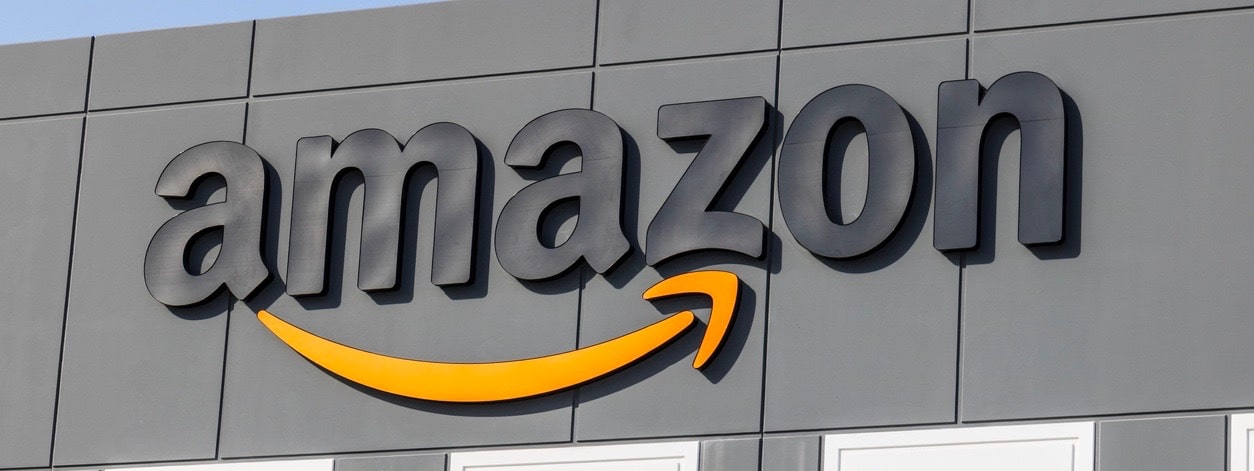The numbers don’t lie: Amazon has 310 million active users, with 197 million people shopping on the e-commerce behemoth monthly. With 1- to 2-day delivery times and the convenience of one-click purchasing, consumers are treated to the ultimate experience in seamless shopping with Amazon—and they are fully embracing it.
As a consumer brand, your job is to make your products easily available to your consumers. Amazon owns nearly 50 percent of the U.S. e-commerce market, meaning that in today’s retail landscape, making your products easily available to consumers means selling them on Amazon.
The state of the industry requires an optimized Amazon marketing strategy
If you already sell on Amazon, then it is time to bring this conversation to the next level: are your customers able to find you on the site? Are your pages optimized to sell?
With more than 5 million marketplace sellers on the platform, the sales competition is high. So not just being on Amazon, but having an optimized presence on the platform, is becoming more important than ever before. How do you know if your pages are optimized for success?
Amazon’s algorithm for ranking products in the e-commerce site is thorough. To ensure your products are being found, a smart combination of optimized content, imagery, positive customer reviews, low return rates, relevancy, and more is needed.

Wondering how your pages will hold up when it comes to being optimized? Start by answering the questions below:
-
Are your products Prime eligible?
The bottom line is that Amazon has dramatically raised consumer expectations when it comes to convenient shopping and quick delivery. With same-day delivery now available in some areas, and more than 100 million Amazon Prime users who receive 2-day (or less!) shipping, consumers expect a fast turnaround time.
That Amazon Prime badge offering free and fast shipping carries a lot of weight and increases the likelihood that consumers will purchase your products.
Whether you use Fulfillment by Amazon (FBA) or Fulfillment by Merchant (FBM) through a Prime-approved warehouse, Amazon Prime is a top way for Amazon sellers to stay on the path to Amazon success.
-
How are your product reviews?
Customer reviews on the Amazon platform are a huge piece of the puzzle for having an optimized Amazon presence. Amazon itself recommends having no fewer than 15 customer reviews (above 3.5 stars!) before even advertising a product on the platform. This requirement is a good rule of thumb to follow when assessing whether a product page is in good health.
-
How are customers looking for your products?
Your key product pages should also be optimized based on Amazon, e-commerce, content marketing, and SEO best practices to ensure that they are being found by shoppers as well as selling themselves. Getting in front of the right people at the right time requires understanding how customers are searching for the products you offer and implementing these behaviors into key portions of your Product Detail Pages (PDPs).
As Amazon’s reign continues to grow worldwide, it is more important than ever for brands to have a strong presence on the e-retail giant. Businesses who are not on the platform are simply missing out.
Making the switch from Amazon Vendor Central to Seller Central
Now that you understand the basics of developing an effective Amazon brand presence, take a closer look at the two types of accounts available to brands, Vendor Central and Seller Central, to help determine the best route to take with your business, or if a hybrid approach could be the solution to your company’s needs.

Amazon Vendor vs. Seller Central and a hybrid approach
Before deciding which option is best for your brand, it is important to understand the differences between the two options. Seller Central allows brands to sell directly to customers on Amazon and gives brands the ability to control pricing. While this option gives brands more control over their product, there are some advertising limitations. The other option, Vendor Central, allows brands to sell their products to Amazon. From there, the platform has complete control over pricing.
While each option has its own advantages and disadvantages, there is an approach that utilizes both; the hybrid model. This model allows for easier price control and faster product listing development, as well as ensures product availability. Similar to the Seller option, the hybrid model still puts more responsibility on the brand.
Making a smooth transition
There are additional factors, like billing and shipping, that brands should be aware of before transitioning to Seller Central. When utilizing Vendor Central, Amazon handles all shipping and billing processes. This means that your brand will have to manage and coordinate these factors. Another thing to consider is the timing of the switch. It is crucial to transition during your brand’s off-time and that you ensure your brand has plenty of time to prepare for a holiday rush.
A deeper dive: Types of Amazon ads explained
Now that you understand why having a strong Amazon marketing strategy is so important, let’s talk about the types of Amazon ads available to your brand. Because Amazon has completely changed the way in which its 300 million users shop, it’s not surprising that there are unique methods of marketing for Amazon. In fact, sellers and vendors have several advertising approaches at their disposal when marketing their products to potential buyers. To explore more about Amazon advertising and managing your PPC ads, and to ensure you’re not missing out on effective Amazon strategies, learn more here.

-
Sponsored ads
Sponsored ads reach Amazon customers as they research and discover products. These ads help promote item listings by grouping products with similar items that potential customers are already looking at. This is why it sometimes seems like Amazon is reading your mind through its suggested brands or products as you browse!
Sponsored ads show on results pages and relevant product pages. From there, consumers are directed to product detail pages or a store through selection of the products advertised. Marketers are able to set a budget, and choose a combination of keywords, products, and/or product categories to target.
Amazon breaks Sponsored Ads into Sponsored Products and Sponsored Brands:
Sponsored Products reach customers who have a high purchasing intent. These products are located within search results and promote individual products in a native appearance familiar to Amazon. When clicked, Sponsored Product advertisements will direct shoppers to the product detail page.
Sponsored Brands can be seen at the top placements above the search results, as well as within the search results. These advertisements feature a custom headline logo along with a set of products and can direct to an Amazon store, product listing page, or product detail page.
-
Display ads
To maximize visibility during the final decisions that a customer is making when considering purchasing a product, Display ads can aid in cross-selling or upselling by featuring other products within your category. Display ads can be located in multiple places and allow advertisers to alert shoppers that your brand offers an alternative.
Advertisers can tailor their own creative solutions to meet their advertising and selling objectives and display ads can be seen on Amazon sites, apps, devices, and third-party sites. These campaigns can be managed personally through the Amazon DSP console or through working with Amazon’s team of experts.
-
Video ads
In order to make deeper connections throughout the buying journey, Video ads on Amazon can help reach consumers through brand messaging on various Amazon properties like IMDb, devices like Fire TV, and across the web. Amazon Video ads can create customer connections by sharing your unique brand message with relevant customers where they are most likely to watch content.
-
Custom ads
If budget is no object, Custom ads might be the right solution for you! These are custom ads designed in-house by Amazon. While this is a high-cost option, these enhanced media campaigns featuring custom solutions allow brands and products to reach shoppers in an unconventional way.
Benefits of advertising on Amazon
While there are many varieties of advertisements to consider when creating an all-encompassing Amazon marketing plan, there are several benefits that Amazon offers advertisers that shouldn’t go unnoticed:
- Pay only for performance: You will not be charged until a consumer clicks on your ad!
- Help along the way: Amazon will suggest keywords or aid in targeting products similar to yours.
- Use competition for ads: When brainstorming keywords for ads, you have the ability to target competing companies and use those insights to bring shoppers over to buy from your “less known” brand.
- Optimized insights: Amazon provides detailed reporting regardless of the type of ad campaign you are running. You can monitor ad performance throughout a campaign and make adjustments to optimize results by changing keywords or adjusting bids as needed.
Amazon Attribution Beta 101: What your brand needs to know
So, you understand the basics of Amazon ads, but what about driving traffic from off-site efforts, like social media or Google Ads? Previously, there wasn’t much visibility available for tracking cross-platform ad performance, but Amazon recently introduced an enticing solution for this dilemma.
Amazon’s new beta measurement solution is on track to provide sellers with insights they’ve sought for years. Read on for information regarding ways in which brands can assess the impact that third-party advertising and marketing has on their sales on the world’s largest retail platform.

Amazon Attribution Beta explained
For brands that choose to sell on Amazon, it is now possible to measure the impact of non-Amazon advertising and media such as search ads, social ads, display ads, video ads, earned media, and email marketing. The Amazon Attribution beta was developed to help brands maximize their advertising return on investment (ROI) by providing an in-depth shopping and sales impact analysis.
Through the console, brands can access cross-channel attribution and pinpoint the digital marketing activities that are helping drive sales on Amazon. With unique conversion measurements, optimization capabilities, and essential information for planning more efficient campaigns in the future, Amazon Attribution offers brands a deeper insight into what works and what doesn’t.
-
Measure to achieve media goals
Analyzing what digital marketing tactics are driving sales to Amazon is just the beginning of Amazon Attribution. The exclusive conversion metrics that the console provides includes Amazon detailed page views, add-to-cart purchases, and a comprehensive glimpse into how each marketing tactic contributes to shopping activity.
-
Optimize with on-demand reporting
With continual access to conversion metrics, brands can pull reports across digital media activations at any given time. The faster advertisers get their hands on data, the faster it will be to optimize advertising campaigns to drive a maximum ROI. Through Amazon Attribution, businesses can unlock insights at each stage of the customer’s purchasing journey, and the console provides metrics that evaluate a brand’s reach and impact through clicks and a detailed look at all of the events that lead to sales.
-
Plan successfully for the future
Amazon Attribution makes it simple for brands to measure their selling performance by providing a number of first-party purchase metrics. By understanding whether or not ads are driving consideration for products on the platform, Amazon Attribution reports on the individual customer’s decision-making journey. From transaction metrics such as number of purchases, to uncovering media’s impact at each stage, brands are able to determine what digital marketing tactics are successful, thereby promoting more efficient campaigns in the future.
Final thoughts
How did we ever live without Amazon? It’s a crazy notion to consider how different our shopping habits were just 10 years ago when compared to those of today. Because Amazon has completely changed the way in which its 300 million users shop, it’s not surprising that there are unique methods of marketing for Amazon. Sellers and Vendors have several advertising approaches at their disposal when marketing their products to potential buyers. Consider these tips when creating your Amazon Seller account and discover the transformative benefits this tech giant has to offer.
Have questions about your Amazon marketing strategy or interested in finding an advertising partner to help you meet your Amazon marketing goals? Contact lotus823 for more information.








